When Chinese and Russian are exporting every kinds of Anti-Stealth Radar & missiles, like Hot Cakes, e.g. S-400 DWL-002 JY-27A YLC-8B, and every US so call stealth warplanes lost all their fundamental combat performance figures to Chinese & Russian Planes, entire strategy of stealth failed, and turned in to a huge handicap and burden fixing USA to be dead and defeated in any war. DARPA & Pentagon admitted that it is GAME OVER for Stealth.
Not only all their stealths became non-stealth, their expensive and useless ex-stealth planes are flying SLOWER, SHORTER, LOWER & CARRY LESS PAYLOAD - ALL DUE TO STEALTH REQUIREMENTS. The defeat of stealth is way too cheap, and easy, just replace old radars, and see the ex-stealth, and use cheap old missiles, and non-stealth warplanes to kill them all! They can not run away, because they are slow, low, short flying & can carry too few missile to fight you.
https://taskandpurpose.com/darpa-stealth-technology-limits/
Did the Pentagon Just Admit Stealth Technology May Not Even Work Anymore?
By
Michael Peck, The National Interest
on July 19, 2018
T&P on Facebook
2
Looking for a great career? Or know another veteran, service member, or military spouse who is? Get started at Hirepurpose.
Did the Pentagon just admit that stealth technology may not work anymore? Or that America must be ready to face a future where its airpower doesn’t control the skies?
The Defense Advanced Research Projects Agency, the Pentagon’s cutting-edge research agency, has quietly raised these possibilities as it searches for future technology to fight the next war. And stealth technology may not be the answer.
“Platform stealth may be approaching physical limits,” says DARPA.
The agency also admits that “our acquisition system is finding it difficult to respond on relevant timescales to adversary progress, which has made the search for next-generation capabilities at once more urgent and more futile.”
If that’s the case, then the next generation of aircraft—the designs that will eventually replace the F-22, F-35 and B-2 stealth aircraft—may not be any stealthier than their predecessors. Or, in the endless race between stealth technology and the sensors that seek to penetrate its veil, stealth may have hit a brick wall.

Thus, DARPA has to ask a question that America has never really had to contemplate before. “Are there acceptable alternatives to air dominance?” DARPA asks. “Is it possible to achieve Joint Force objectives without clearing the skies of enemy fighters and bombers, and eliminating all surface-based threats? Can this be achieved without placing a high-value, sophisticated platform and crew at risk — reducing leverage potential adversaries currently hold over the U.S.?”
DARPA says it wants to see if it’s possible to “go beyond evolutionary advances in stealth technology and disrupt traditional doctrines of air dominance/air supremacy?”
But the traditional U.S. way of war since 1941 has been to seek control of the skies: though there have been rough patches, such as the Pacific War in 1941 and the Bomber Offensive over Germany in 1943–44, America has largely succeeded in clearing the skies of enemy planes and filling them with its own. Few Americans alive today have ever been bombed by aircraft, which is more than America’s enemies can say.
But those days are gone, as Russia and now China are developing stealth aircraft and lethal anti-aircraft missiles.
Related: What We Know About China’s Secretive New Stealth Bombers »
Now, DARPA is looking for other ways that U.S airpower can accomplish its objectives even without air superiority, such as “lethality through a combination of overwhelming performance (e.g. hypersonics) and overwhelming numbers (e.g. swarming low-cost weapons).”
Indeed, the Pentagon’s pet research agency seems to be taking a swipe at the concept of small numbers of expensive aircraft like the F-35 stealth fighter and B-2 stealth bomber when it calls for “reduced reliance on increasingly complex, monolithic platforms.”
Similarly, “how can we reduce reliance on large, expensive, and increasingly vulnerable carrier strike group platforms?” DARPA asks.
It sees one possible solution as “small, inexpensive, massively-networked vessels derived from commercial designs.” That same approach also applies to space, as the United States moves away from “monolithic, high-value space assets and instruments” in favor of smaller, simpler and cheaper satellites and launch vehicles.
On land, DARPA suggests the future of war will be smaller and more lethal ground units operating without the immense infrastructure of forward operating bases and long supply lines. The agency envisions autonomous “terranets” (presumably AI-controlled) that will coordinate the activities of brigade-sized formations of manned and unmanned units, as they battle in the darkness of the emerging domain of subterranean warfare.
Interestingly, the example of future ground combat that DARPA cites is “Starship Troopers,” the legendary sci-fi novel and movies of troops in powered armor. But Robert Heinlein’s novel was really Iwo Jima and Okinawa in space.
Whether DARPA’s vision is prophetic or just premature remains to be seen.
Read the full DARPA report below:
DARPA Call For Disruptive Capabilities for Future Warfare Tactical Technology Office by Jared Keller
https://newatlas.com/quantum-radar-detect-steath-aircraft/54356/
Quantum radar to render stealth technologies ineffective
Military

David Szondy
April 26th, 2018
2 pictures

The new quantum radar would negate the near-invisibility of stealth aircraft like the B-2 Spirit bomber(Credit: USAF)
View gallery - 2 images
Stealth technology may not be very stealthy in the future thanks to a US$2.7-million project by the Canadian Department of National Defence to develop a new quantum radar system. The project, led by Jonathan Baugh at the University of Waterloo's Institute for Quantum Computing (IQC), uses the phenomenon of quantum entanglement to eliminate heavy background noise, thereby defeating stealth anti-radar technologies to detect incoming aircraft and missiles with much greater accuracy.
Ever since the development of modern camouflage during the First World War, the military forces of major powers have been in a continual arms race between more advanced sensors and more effective stealth technologies. Using composite materials, novel geometries that limit microwave reflections, and special radar-absorbing paints, modern stealth aircraft have been able to reduce their radar profiles to that of a small bird – if they can be seen at all.
This stealthiness is compounded by modern radar jamming and deception technologies and by natural phenomena. In fact, one reason the Canadian Department of National Defence is pursuing the quantum radar project is that, in addition to Canada being at the frontier of any incoming strategic attacks directed against the West, it's also in a region that is extremely hostile to conventional radar.

"In the Arctic, space weather such as geomagnetic storms and solar flares interfere with radar operation and make the effective identification of objects more challenging," says Baugh. "By moving from traditional radar to quantum radar, we hope to not only cut through this noise, but also to identify objects that have been specifically designed to avoid detection."
Conventional radar suffers from a universal problem of all radio communications and detection, which is the signal to noise ratio. That is, if there is too much random noise mixed in with the signal you're trying to detect, it doesn't' matter how much you turn up the volume. That only turns up the noise as well.
Quantum radar, on the other hand, gets around this using something called quantum illumination to filter out the noise by making the outgoing photons that make up the radar signal identifiable. It does this by means of the principle of quantum entanglement. This is when two photons are generated or made to interact in such a way that their properties are linked together. When this happens, if you can determine the position, momentum, spin, or polarization of one photon, you can ascertain the complementary position, momentum, spin, or polarization of its partner.
The upshot of this is that by shooting one photon out of the radar dish and retaining its pair, it's possible to filter out unpaired photons from the returning beam. This way, background noise and electronic jamming is eliminated and the radar image becomes clear enough to detect even the most advanced stealth craft.
The quantum radar under development at the IQC is currently confined to the laboratory under the Department of National Defence's All Domain Situational Awareness (ADSA) Science & Technology program, but it is hoped that it will one day be mature enough to replace the North American Aerospace Defense Command's (NORAD) current 54 North Warning System (NWS) radar stations in the Arctic, which may need to be replaced from 2025.
"This project will allow us to develop the technology to help move quantum radar from the lab to the field," says Baugh. "It could change the way we think about national security."
Source: University of Waterloo
http://mil.news.sina.com.cn/jssd/2018-07-21/doc-ihfqtahi0895662.shtml
美军提出3大问题欲放弃隐身战机 我歼-20还继续吗?
美军提出3大问题欲放弃隐身战机 我歼-20还继续吗?
0
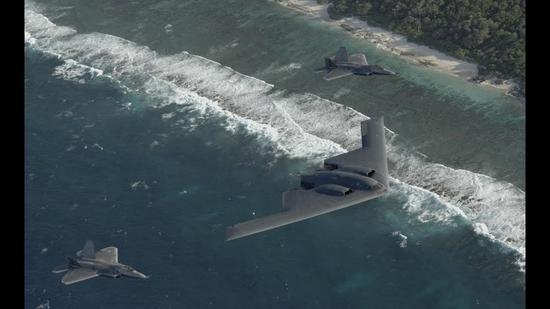
众所周知,美军是世界上第一个研制并装备隐身战机的国家,而且拥有世界上最全的隐身作战飞机谱系,隐身战术战斗机有F-22、F-35;隐身轰炸机有B-2;隐身攻击机有F-117。但美国军方专门负责开发新技术的DARPA(国防先进计划研究局)却准备承认隐身技术已经发展到头。
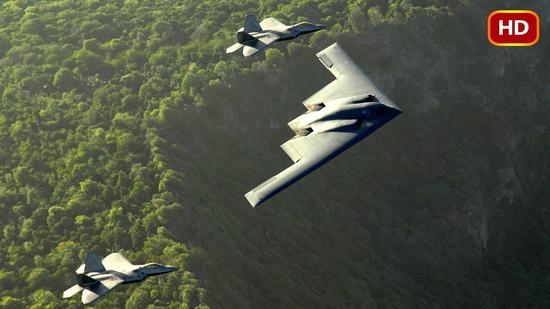
近日DARPA在接受媒体采访时表示:作战平台隐身化技术已经接近物理极限,并承认“美军研发隐身平台的速度,远远赶不上对手开发反隐身技术的速度,因此迫使美军不得不加快下一代作战飞机技术的研发,而如果单纯依赖隐身技术只能是走进死胡同”。
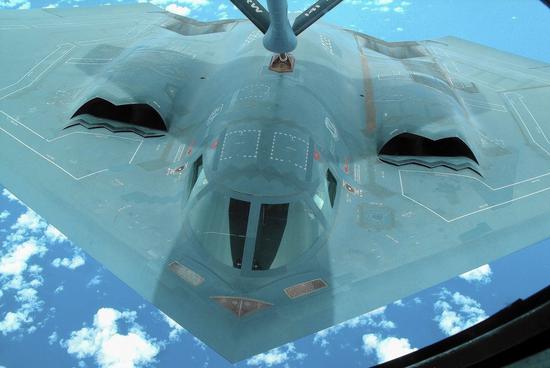
如果美军确定了这样的方向,意味着美军用来取代F-22、F-35和B-2的下一代作战飞机,隐身性能并不会有所超越,甚至还可能有所降低。一些美国专家甚至认为,在隐身技术和反隐身技术的长期竞赛中,隐身技术很可能是最终的失败者。而这对于美军来说,意味着全新的空中作战理念。
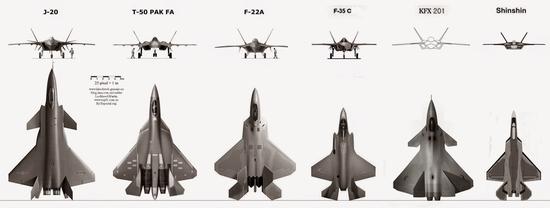
为此,DARPA提出了三个全新的课题:空中优势是不是可以替代的?如果未来不全部击落对手战机和消灭防空导弹,美军联合作战力量是否仍然有可能达成作战目标?如果美军不再部署复杂昂贵隐身作战平台,是否也能达成作战目标?DARPA认为现在需要考虑后隐身时代的问题,甚至要颠覆传统的空中优势作战理论。

从第二次世界大战爆发以来,美军的作战样式就是夺取绝对制空权。在二战中,尽管美军作战力量付出了重大牺牲,但达成了作战目标:把日本德国所有空战力量消灭殆尽,然后占领天空肆意任为。在二战后,美军空军追寻的目标也是夺取绝对制空权,并贯穿第一至第五代战机的发展。但现在这样的“好日子”要过去了,因为中国和俄罗斯也在发展隐身战机和反隐身武器。
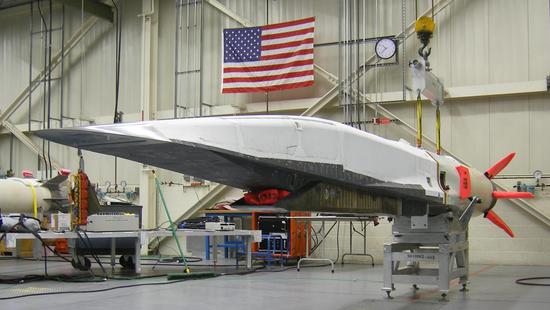
因此现在DARPA设想,未来战争要放弃F-22、F-35、B-2等“复杂昂贵的单体平台”,而用压倒性的性能或者数量来实现战场杀伤,例如高超音速武器和大量低成本蜂群式无人攻击机。此外DARPA还认为,这些技术不但可以取代F-22等第五代战机,甚至可以取代更为昂贵的航母战斗群。
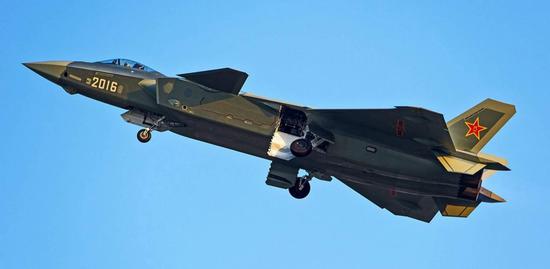
美军的这种想法,是不是意味着中国未来也没必要研发隐身战机呢?答案是否定的。首先中美的作战目标不同,美国是全球进攻作战,而中国是积极防御战略,面对周边越来越多的美军F-35和F-22,我军需要自己的五代隐身战机和隐身轰炸机。其次研制反隐身武器的基础是具备隐身武器研发实力。只有中国装备了歼-20,才有可能研发出来有效的反隐身武器,否则都是空对空的设想,并不具备实战意义。那种没有均衡发展下的非对称作战,最后往往会掉入对手设下的技术陷阱。(作者署名:诤闻军事)
The US military raised three major issues to abandon stealth fighters. Do I still continue?
The US military raised three major issues to abandon stealth fighters. Do I still continue?
0
As we all know, the US military is the first country in the world to develop and equip stealth fighters, and it has the world's most complete stealth combat aircraft pedigree, stealth tactical fighters have F-22, F-35; stealth bombers have B-2; stealth attack The machine has F-117. However, the US military's DARPA (National Defense Advanced Research Agency), which specializes in the development of new technologies, is prepared to recognize that stealth technology has been developed.
Recently, DARPA said in an interview with the media: The stealth technology of the combat platform is close to the physical limit, and acknowledges that "the speed at which the US military develops stealth platforms is far behind the speed at which the opponent develops anti-stealth technology, thus forcing the US military to accelerate the next generation of combat aircraft. The development of technology, and if you rely solely on stealth technology can only be into a dead end."
If the US military determines such a direction, it means that the US military will replace the F-22, F-35 and B-2 next-generation combat aircraft, the stealth performance will not be exceeded, and may even be reduced. Some American experts even believe that in the long-term competition between stealth technology and anti-stealth technology, stealth technology is likely to be the ultimate loser. This means a new air combat concept for the US military.
To this end, DARPA has proposed three new topics: Can air superiority be replaced? If not all of the fighters and the anti-aircraft missiles are shot down in the future, is it still possible for the US military joint operations forces to achieve their operational targets? If the US military no longer deploys complex and expensive stealth combat platforms, can it also achieve its operational goals? DARPA believes that it is now necessary to consider the problems of the post-invisibility era, and even to subvert the traditional theory of air superiority operations.
Since the outbreak of the Second World War, the American military’s style of warfare has been to seize absolute air superiority. In World War II, although the US military's combat forces paid a major sacrifice, they achieved their operational goals: to eliminate all air combat forces in Japan and Germany, and then to occupy the sky. After the Second World War, the goal pursued by the US Air Force was to seize absolute air superiority and to penetrate the development of the first to fifth generation fighters. But now such a "good day" is over, because China and Russia are also developing stealth fighters and anti-stealth weapons.
Therefore, DARPA now envisages that the future war will abandon the "complex and expensive single platform" such as the F-22, F-35, and B-2, and use overwhelming performance or quantity to achieve battlefield damage, such as hypersonic weapons and a large number of low Cost bee colony unmanned attack aircraft. In addition, DARPA believes that these technologies can not only replace the fifth-generation fighters such as the F-22, but even replace the more expensive aircraft carrier battle group.
Does this idea of the US military mean that China does not need to develop stealth fighters in the future? the answer is negative. First of all, China and the United States have different operational objectives. The United States is a global offensive operation, and China is an active defense strategy. In the face of more and more US troops F-35 and F-22, our army needs its own five-generation stealth fighters and stealth bombers. Secondly, the basis for the development of anti-stealth weapons is the ability to develop stealth weapons. Only when China is equipped with the 歼-20 will it be possible to develop effective anti-stealth weapons. Otherwise, it is an air-to-air idea and does not have practical significance. The kind of asymmetric warfare without balanced development will eventually fall into the technical trap set by the opponent. (Author's signature: Gossip Military)
Not only all their stealths became non-stealth, their expensive and useless ex-stealth planes are flying SLOWER, SHORTER, LOWER & CARRY LESS PAYLOAD - ALL DUE TO STEALTH REQUIREMENTS. The defeat of stealth is way too cheap, and easy, just replace old radars, and see the ex-stealth, and use cheap old missiles, and non-stealth warplanes to kill them all! They can not run away, because they are slow, low, short flying & can carry too few missile to fight you.
https://taskandpurpose.com/darpa-stealth-technology-limits/
Did the Pentagon Just Admit Stealth Technology May Not Even Work Anymore?
By
Michael Peck, The National Interest
on July 19, 2018
T&P on Facebook
2
Looking for a great career? Or know another veteran, service member, or military spouse who is? Get started at Hirepurpose.
Did the Pentagon just admit that stealth technology may not work anymore? Or that America must be ready to face a future where its airpower doesn’t control the skies?
The Defense Advanced Research Projects Agency, the Pentagon’s cutting-edge research agency, has quietly raised these possibilities as it searches for future technology to fight the next war. And stealth technology may not be the answer.
“Platform stealth may be approaching physical limits,” says DARPA.
The agency also admits that “our acquisition system is finding it difficult to respond on relevant timescales to adversary progress, which has made the search for next-generation capabilities at once more urgent and more futile.”
If that’s the case, then the next generation of aircraft—the designs that will eventually replace the F-22, F-35 and B-2 stealth aircraft—may not be any stealthier than their predecessors. Or, in the endless race between stealth technology and the sensors that seek to penetrate its veil, stealth may have hit a brick wall.

Thus, DARPA has to ask a question that America has never really had to contemplate before. “Are there acceptable alternatives to air dominance?” DARPA asks. “Is it possible to achieve Joint Force objectives without clearing the skies of enemy fighters and bombers, and eliminating all surface-based threats? Can this be achieved without placing a high-value, sophisticated platform and crew at risk — reducing leverage potential adversaries currently hold over the U.S.?”
DARPA says it wants to see if it’s possible to “go beyond evolutionary advances in stealth technology and disrupt traditional doctrines of air dominance/air supremacy?”
But the traditional U.S. way of war since 1941 has been to seek control of the skies: though there have been rough patches, such as the Pacific War in 1941 and the Bomber Offensive over Germany in 1943–44, America has largely succeeded in clearing the skies of enemy planes and filling them with its own. Few Americans alive today have ever been bombed by aircraft, which is more than America’s enemies can say.
But those days are gone, as Russia and now China are developing stealth aircraft and lethal anti-aircraft missiles.
Related: What We Know About China’s Secretive New Stealth Bombers »
Now, DARPA is looking for other ways that U.S airpower can accomplish its objectives even without air superiority, such as “lethality through a combination of overwhelming performance (e.g. hypersonics) and overwhelming numbers (e.g. swarming low-cost weapons).”
Indeed, the Pentagon’s pet research agency seems to be taking a swipe at the concept of small numbers of expensive aircraft like the F-35 stealth fighter and B-2 stealth bomber when it calls for “reduced reliance on increasingly complex, monolithic platforms.”
Similarly, “how can we reduce reliance on large, expensive, and increasingly vulnerable carrier strike group platforms?” DARPA asks.
It sees one possible solution as “small, inexpensive, massively-networked vessels derived from commercial designs.” That same approach also applies to space, as the United States moves away from “monolithic, high-value space assets and instruments” in favor of smaller, simpler and cheaper satellites and launch vehicles.
On land, DARPA suggests the future of war will be smaller and more lethal ground units operating without the immense infrastructure of forward operating bases and long supply lines. The agency envisions autonomous “terranets” (presumably AI-controlled) that will coordinate the activities of brigade-sized formations of manned and unmanned units, as they battle in the darkness of the emerging domain of subterranean warfare.
Interestingly, the example of future ground combat that DARPA cites is “Starship Troopers,” the legendary sci-fi novel and movies of troops in powered armor. But Robert Heinlein’s novel was really Iwo Jima and Okinawa in space.
Whether DARPA’s vision is prophetic or just premature remains to be seen.
Read the full DARPA report below:
DARPA Call For Disruptive Capabilities for Future Warfare Tactical Technology Office by Jared Keller
https://newatlas.com/quantum-radar-detect-steath-aircraft/54356/
Quantum radar to render stealth technologies ineffective
Military
David Szondy
April 26th, 2018
2 pictures

The new quantum radar would negate the near-invisibility of stealth aircraft like the B-2 Spirit bomber(Credit: USAF)
View gallery - 2 images
Stealth technology may not be very stealthy in the future thanks to a US$2.7-million project by the Canadian Department of National Defence to develop a new quantum radar system. The project, led by Jonathan Baugh at the University of Waterloo's Institute for Quantum Computing (IQC), uses the phenomenon of quantum entanglement to eliminate heavy background noise, thereby defeating stealth anti-radar technologies to detect incoming aircraft and missiles with much greater accuracy.
Ever since the development of modern camouflage during the First World War, the military forces of major powers have been in a continual arms race between more advanced sensors and more effective stealth technologies. Using composite materials, novel geometries that limit microwave reflections, and special radar-absorbing paints, modern stealth aircraft have been able to reduce their radar profiles to that of a small bird – if they can be seen at all.
This stealthiness is compounded by modern radar jamming and deception technologies and by natural phenomena. In fact, one reason the Canadian Department of National Defence is pursuing the quantum radar project is that, in addition to Canada being at the frontier of any incoming strategic attacks directed against the West, it's also in a region that is extremely hostile to conventional radar.

"In the Arctic, space weather such as geomagnetic storms and solar flares interfere with radar operation and make the effective identification of objects more challenging," says Baugh. "By moving from traditional radar to quantum radar, we hope to not only cut through this noise, but also to identify objects that have been specifically designed to avoid detection."
Conventional radar suffers from a universal problem of all radio communications and detection, which is the signal to noise ratio. That is, if there is too much random noise mixed in with the signal you're trying to detect, it doesn't' matter how much you turn up the volume. That only turns up the noise as well.
Quantum radar, on the other hand, gets around this using something called quantum illumination to filter out the noise by making the outgoing photons that make up the radar signal identifiable. It does this by means of the principle of quantum entanglement. This is when two photons are generated or made to interact in such a way that their properties are linked together. When this happens, if you can determine the position, momentum, spin, or polarization of one photon, you can ascertain the complementary position, momentum, spin, or polarization of its partner.
The upshot of this is that by shooting one photon out of the radar dish and retaining its pair, it's possible to filter out unpaired photons from the returning beam. This way, background noise and electronic jamming is eliminated and the radar image becomes clear enough to detect even the most advanced stealth craft.
The quantum radar under development at the IQC is currently confined to the laboratory under the Department of National Defence's All Domain Situational Awareness (ADSA) Science & Technology program, but it is hoped that it will one day be mature enough to replace the North American Aerospace Defense Command's (NORAD) current 54 North Warning System (NWS) radar stations in the Arctic, which may need to be replaced from 2025.
"This project will allow us to develop the technology to help move quantum radar from the lab to the field," says Baugh. "It could change the way we think about national security."
Source: University of Waterloo
http://mil.news.sina.com.cn/jssd/2018-07-21/doc-ihfqtahi0895662.shtml
美军提出3大问题欲放弃隐身战机 我歼-20还继续吗?
美军提出3大问题欲放弃隐身战机 我歼-20还继续吗?
0

众所周知,美军是世界上第一个研制并装备隐身战机的国家,而且拥有世界上最全的隐身作战飞机谱系,隐身战术战斗机有F-22、F-35;隐身轰炸机有B-2;隐身攻击机有F-117。但美国军方专门负责开发新技术的DARPA(国防先进计划研究局)却准备承认隐身技术已经发展到头。

近日DARPA在接受媒体采访时表示:作战平台隐身化技术已经接近物理极限,并承认“美军研发隐身平台的速度,远远赶不上对手开发反隐身技术的速度,因此迫使美军不得不加快下一代作战飞机技术的研发,而如果单纯依赖隐身技术只能是走进死胡同”。

如果美军确定了这样的方向,意味着美军用来取代F-22、F-35和B-2的下一代作战飞机,隐身性能并不会有所超越,甚至还可能有所降低。一些美国专家甚至认为,在隐身技术和反隐身技术的长期竞赛中,隐身技术很可能是最终的失败者。而这对于美军来说,意味着全新的空中作战理念。

为此,DARPA提出了三个全新的课题:空中优势是不是可以替代的?如果未来不全部击落对手战机和消灭防空导弹,美军联合作战力量是否仍然有可能达成作战目标?如果美军不再部署复杂昂贵隐身作战平台,是否也能达成作战目标?DARPA认为现在需要考虑后隐身时代的问题,甚至要颠覆传统的空中优势作战理论。

从第二次世界大战爆发以来,美军的作战样式就是夺取绝对制空权。在二战中,尽管美军作战力量付出了重大牺牲,但达成了作战目标:把日本德国所有空战力量消灭殆尽,然后占领天空肆意任为。在二战后,美军空军追寻的目标也是夺取绝对制空权,并贯穿第一至第五代战机的发展。但现在这样的“好日子”要过去了,因为中国和俄罗斯也在发展隐身战机和反隐身武器。

因此现在DARPA设想,未来战争要放弃F-22、F-35、B-2等“复杂昂贵的单体平台”,而用压倒性的性能或者数量来实现战场杀伤,例如高超音速武器和大量低成本蜂群式无人攻击机。此外DARPA还认为,这些技术不但可以取代F-22等第五代战机,甚至可以取代更为昂贵的航母战斗群。

美军的这种想法,是不是意味着中国未来也没必要研发隐身战机呢?答案是否定的。首先中美的作战目标不同,美国是全球进攻作战,而中国是积极防御战略,面对周边越来越多的美军F-35和F-22,我军需要自己的五代隐身战机和隐身轰炸机。其次研制反隐身武器的基础是具备隐身武器研发实力。只有中国装备了歼-20,才有可能研发出来有效的反隐身武器,否则都是空对空的设想,并不具备实战意义。那种没有均衡发展下的非对称作战,最后往往会掉入对手设下的技术陷阱。(作者署名:诤闻军事)
The US military raised three major issues to abandon stealth fighters. Do I still continue?
The US military raised three major issues to abandon stealth fighters. Do I still continue?
0
As we all know, the US military is the first country in the world to develop and equip stealth fighters, and it has the world's most complete stealth combat aircraft pedigree, stealth tactical fighters have F-22, F-35; stealth bombers have B-2; stealth attack The machine has F-117. However, the US military's DARPA (National Defense Advanced Research Agency), which specializes in the development of new technologies, is prepared to recognize that stealth technology has been developed.
Recently, DARPA said in an interview with the media: The stealth technology of the combat platform is close to the physical limit, and acknowledges that "the speed at which the US military develops stealth platforms is far behind the speed at which the opponent develops anti-stealth technology, thus forcing the US military to accelerate the next generation of combat aircraft. The development of technology, and if you rely solely on stealth technology can only be into a dead end."
If the US military determines such a direction, it means that the US military will replace the F-22, F-35 and B-2 next-generation combat aircraft, the stealth performance will not be exceeded, and may even be reduced. Some American experts even believe that in the long-term competition between stealth technology and anti-stealth technology, stealth technology is likely to be the ultimate loser. This means a new air combat concept for the US military.
To this end, DARPA has proposed three new topics: Can air superiority be replaced? If not all of the fighters and the anti-aircraft missiles are shot down in the future, is it still possible for the US military joint operations forces to achieve their operational targets? If the US military no longer deploys complex and expensive stealth combat platforms, can it also achieve its operational goals? DARPA believes that it is now necessary to consider the problems of the post-invisibility era, and even to subvert the traditional theory of air superiority operations.
Since the outbreak of the Second World War, the American military’s style of warfare has been to seize absolute air superiority. In World War II, although the US military's combat forces paid a major sacrifice, they achieved their operational goals: to eliminate all air combat forces in Japan and Germany, and then to occupy the sky. After the Second World War, the goal pursued by the US Air Force was to seize absolute air superiority and to penetrate the development of the first to fifth generation fighters. But now such a "good day" is over, because China and Russia are also developing stealth fighters and anti-stealth weapons.
Therefore, DARPA now envisages that the future war will abandon the "complex and expensive single platform" such as the F-22, F-35, and B-2, and use overwhelming performance or quantity to achieve battlefield damage, such as hypersonic weapons and a large number of low Cost bee colony unmanned attack aircraft. In addition, DARPA believes that these technologies can not only replace the fifth-generation fighters such as the F-22, but even replace the more expensive aircraft carrier battle group.
Does this idea of the US military mean that China does not need to develop stealth fighters in the future? the answer is negative. First of all, China and the United States have different operational objectives. The United States is a global offensive operation, and China is an active defense strategy. In the face of more and more US troops F-35 and F-22, our army needs its own five-generation stealth fighters and stealth bombers. Secondly, the basis for the development of anti-stealth weapons is the ability to develop stealth weapons. Only when China is equipped with the 歼-20 will it be possible to develop effective anti-stealth weapons. Otherwise, it is an air-to-air idea and does not have practical significance. The kind of asymmetric warfare without balanced development will eventually fall into the technical trap set by the opponent. (Author's signature: Gossip Military)
